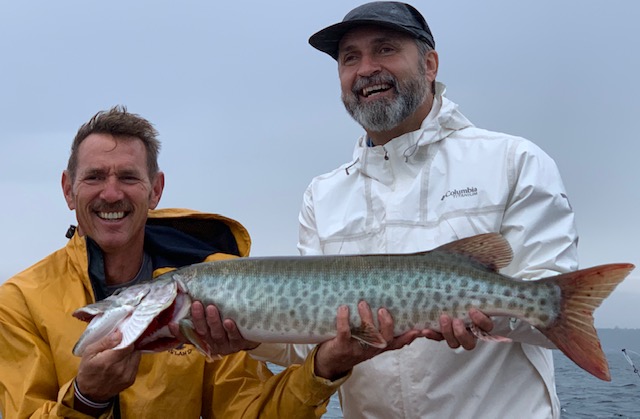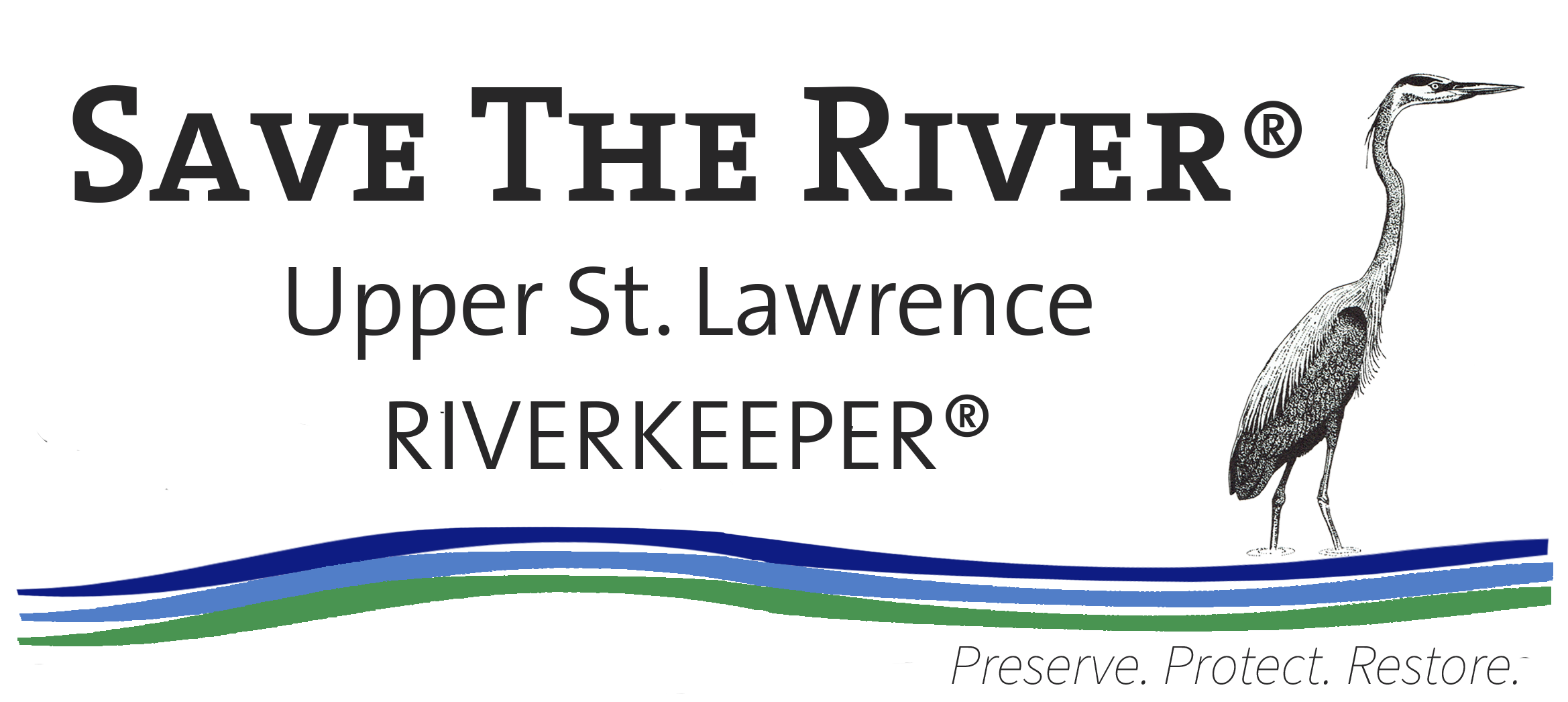By Lawrence Gunther
Here’s a truly amazing story about diverse stakeholders coming together to protect vital Muskie spawning habitat. It starts with The Upper St. Lawrence Riverkeeper John Peach, who also serves as the Executive Director of Save The River, when he discovered plans by U.S. Customs and Border Protection to build a new facility in Blind Bay on the south shore of the Upper St. Lawrence River. The chosen site is one of the few remaining prime spawning sites used by muskie in the 1000 Islands. It’s also adjacent to a Thousand Islands Land Trust (TILT) preserve that is home to numerous species of fish and birds. John knew he had to act and quickly if he was to protect this vital habitat from serious degradation. What happened next is remarkable.
The Blind Bay Wetlands is connected to Sand Bay at the northern tip of Chippewa Bay. It’s part of the largest shoreline shallow water ecosystem in St. Lawrence County. It’s also designated by New York State as significant habitat. One might wonder why the site was even under consideration.

Jeff Garnsey is a 3rd generation Muskie guide on the St. Lawrence and Chair of Save The River’s board of directors. In a Blue Fish Radio podcast, we recorded in 2018 while trolling for Muskie aboard his 1953 ChrisCraft, Jeff expressed concern about the steady decrease of St. Lawrence River Muskie over recent decades. He stressed that taking action to protect shoreline wetlands through measures such as Plan 2014 are vital to restoring muskie numbers along with 53 other fish species that can be found in the Upper St. Lawrence River. Link below to hear my conversation with Jeff Garnsey and John Peach on The Blue Fish Radio Show:
https://www.spreaker.com/user/5725616/e264-survival-of-upper-st-lawrence-river
According to Dr. John Farrell, professor of Environmental Science and Director of the Thousand Islands Biological Station (TIBS), the decline of Muskie worsened following the emergence of a highly transmissible virus that first showed up early in 2000. Research conducted by TIBS identified invasive Roundhead Goby, now common forage for many of the river’s predators, are serving as vectors for the virus. Link below to hear Dr. John Farrell and Dr. Anna Conklyn discuss how the virus is impacting Upper St. Lawrence River Muskie on the Blue Fish Radio Show:
In addition to Upper St. Lawrence muskie experiencing an on-going virus outbreak, and the loss of habitat due to shoreline wetlands being left high-and-dry, many of the river’s remaining wetlands are being taken over by an invasive hybrid cattail infamous for obstructing natural water flow, crowding out native plant species, and degrading conditions for native fish and wildlife. In an effort to push back on this invasive wetland plant, the Thousand Island Land Trust, in partnership with Ducks Unlimited, implemented a series of interconnected potholes and channels in 12 hectares of dense cattail mat located in the bay next to Blind Bay. Several culverts were also replaced to enhance water flow. The restoration work saw noticeable wetland improvements of benefit to both fish and birds.
Those familiar with the wetland and river understood that blocking development of the proposed USCBP facility in Blind Bay was critical. According to the Thousand Island Land Trust’s Executive director Jake Tibbles, “the cumulative environmental consequences of habitat fragmentation, edge encroachment, migration barriers such as perimeter fencing, noise and light pollution, and wetland degradation would have lasting impacts that reach far beyond Blind Bay.” Jake understood all to well what such a development would mean for their recent restoration work in the adjacent conserved and enhanced wetlands.
The advocacy efforts objecting to the commercial development of Blind Bay quickly grew over the first few months of 2022. Before long, thousands of letters had been written, news coverage was prolific, and numerous organizations got behind the movement to save Blind Bay. All this despite what construction and operation of such a facility would mean to the local economy. Advocates aren’t against such a facility being built in the area, just not in the middle of sensitive and vital wetlands.
Blue Fish Radio is pleased to introduce you to four of the advocates behind the push to end the development of Blind Bay. Each tells their portion of the story, and then together explore what needs to come next. Their collaboration represents an amazing model of what can be accomplished when diverse advocates unite. Guests include:
John Peach, Upper St. Lawrence Riverkeeper and Executive Director of Save the River
Jeff Garnsey 3rd generation Muskie guide and Chair of Save The River
Dr. John Farrell, Professor of Aquatic and Fisheries Science & Director, Thousand Islands Biological Station
Jake Tibbles Executive Director Thousand Island Land Trust
Link below to watch this engaging and informative tale of strength, determination and grass-roots advocacy on the Blue Fish Canada YouTube channel:
https://youtu.be/GO-gvgYQmxA
